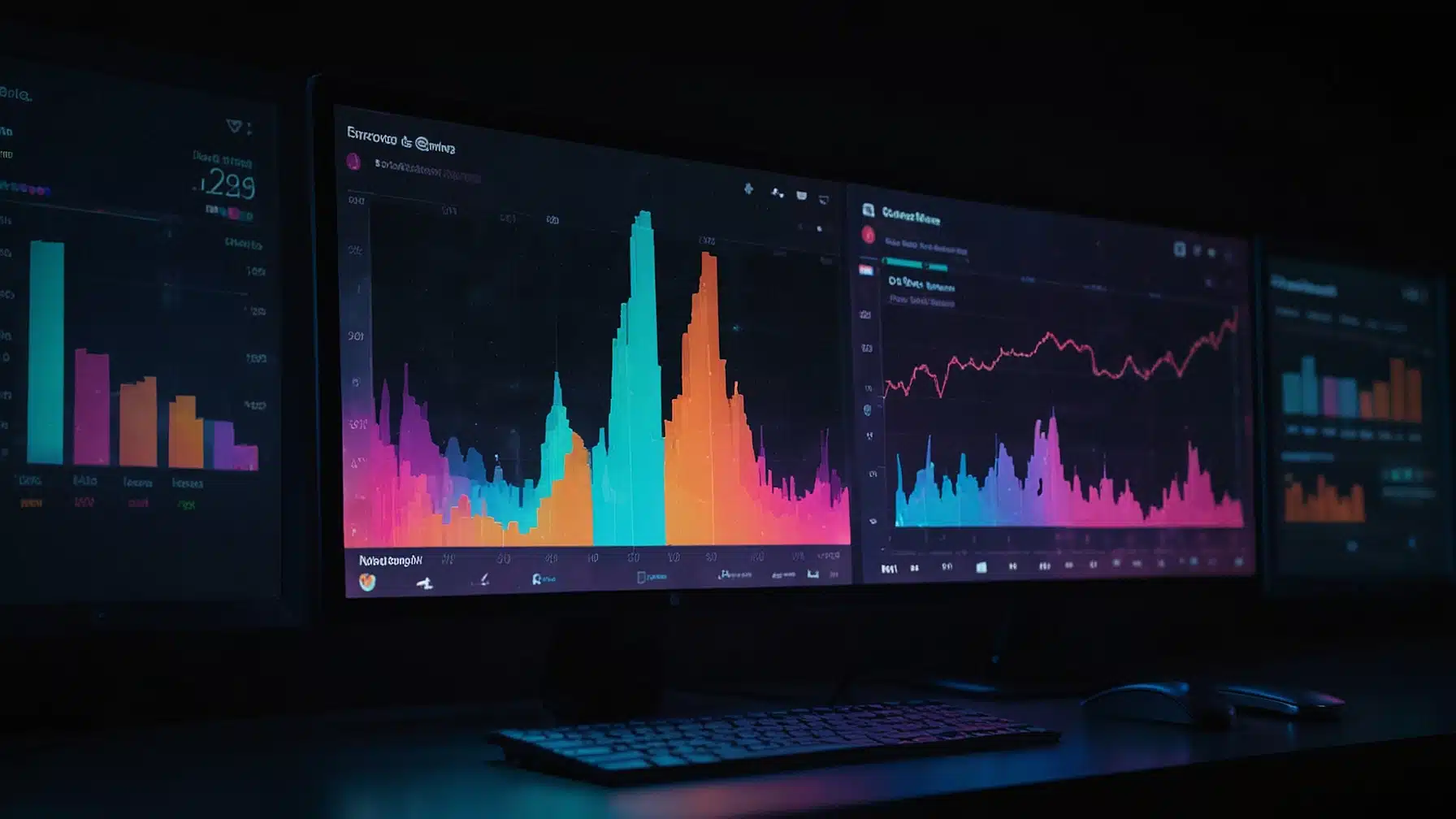Understanding how YouTube’s algorithm works can be vital for both viewers and creators. The algorithm determines which videos are recommended, aiming to keep users engaged on the platform. By understanding the algorithm, you can enjoy content that better matches your interests and create videos that reach a larger audience.
Viewers have some control over the content they see by using features like the three vertical dots below a video to customize their feed. Creators can optimize their videos by paying attention to factors like video performance analytics and watch time. Using SEO keywords relevant to your content can also help increase visibility.
This guide will explore the details of YouTube’s algorithm and provide practical tips to make the most of it. Whether you’re watching or creating, learning how the system works can improve your YouTube experience.
Evolution of the YouTube Algorithm
YouTube’s algorithm has changed significantly over time, shifting its focus from simple metrics like views to more complex factors such as engagement and machine learning insights. Understanding these shifts helps you optimize your content for better visibility.
History and Changes
In its early days, YouTube’s algorithm prioritized views and clicks. This meant the most-watched videos appeared at the top of search results and recommendations. Over time, the algorithm began to consider other factors, such as watch time and user interactions, to better gauge video quality and relevance.
The introduction of deep neural networks enabled the algorithm to analyze video content more accurately. This allowed for more personalized video recommendations. Key changes over the years include the use of performance analytics and user data to refine content suggestions.
From Views to Engagement
Initially, YouTube focused mainly on the number of views. Creators quickly learned that catchy thumbnails and clickbait titles could drive clicks. However, this led to low-quality content flooding the platform, as the algorithm couldn’t gauge engagement effectively.
To counter this, YouTube’s algorithm began to prioritize engagement metrics. These include watch time, likes, comments, and shares. Higher engagement signals generally indicate better content, leading to more accurate recommendations. The shift toward engagement helped improve content quality as creators focused more on producing valuable and engaging videos.
Machine Learning and AI Integration
The integration of machine learning and AI has transformed YouTube’s algorithm. Using advanced AI, like deep neural networks, YouTube analyzes vast amounts of data to predict what users want to watch next. The algorithm looks at your watch history, search queries, and interaction patterns to make personalized recommendations.
Machine learning models also consider performance analytics, assessing how well videos perform across various metrics. This approach allows the algorithm to continually improve, providing users with more relevant content over time. You can influence the algorithm by creating high-quality, engaging videos that resonate with your audience’s preferences.
Incorporating these elements into your content strategy can help increase visibility and audience retention.
Key Metrics and Their Impact
Understanding key metrics is crucial for optimizing your YouTube channel. These metrics provide insights into what makes videos successful and how they can be improved to reach a larger audience.
Watch Time and Viewer Engagement
Watch time is essential because it measures the total minutes viewers spend watching your videos. The YouTube algorithm uses this metric to gauge a video’s engagement level. Higher watch time often results in better rankings in search results and recommendations.
Viewer engagement includes likes, comments, and shares. These signals show that your content resonates with the audience. Therefore, creating engaging and captivating content can significantly increase your channel’s visibility and growth.
Engagement metrics also include watch history. This helps YouTube recommend your videos to viewers who have shown interest in similar content.
Click-Through Rate and Video Performance
Click-through rate (CTR) measures how often people click on your video after seeing the thumbnail and title. A higher CTR indicates that your video is attractive and relevant to the audience.
CTR is influenced by the video thumbnail, title, and description. Crafting eye-catching thumbnails and compelling titles can dramatically boost your video’s performance. If your CTR is low, consider changing these elements to better match your audience’s interests.
Video performance also includes metrics like video views and engagement rate. These help determine how well your content is received by viewers.
The Role of Metadata in Discoverability
Metadata includes video titles, descriptions, tags, and keywords. Effective use of metadata can significantly boost your video’s discoverability.
Titles should be clear and include important keywords relevant to your content. Descriptions provide more context and should be detailed and keyword-rich. Tags help categorize your video and should be specific and relevant.
Properly optimized metadata ensures that your video appears in relevant search results and recommendations. This increases the likelihood of reaching a broader audience and attracting more views.
Use engagement metrics and keywords effectively to optimize metadata and improve your channel’s overall visibility.
Best Practices for Content Creators
To succeed on YouTube, focus on crafting attractive titles and thumbnails, optimizing for search engines, and retaining your audience throughout the video. These practices will enhance the engagement and visibility of your content, making it more accessible to viewers.
Creating Compelling Titles and Thumbnails
A strong title and thumbnail can significantly impact your video’s click-through rate. Make sure your titles are clear and descriptive, capturing the essence of your content in a few words. Use keywords relevant to your video topic to improve discoverability.
Thumbnails should be visually appealing and accurately represent your video’s content. High-quality images with bold, readable text and vibrant colors can attract more clicks. Don’t use misleading thumbnails, as this can hurt your credibility and decrease viewer satisfaction.
Understanding and Implementing SEO
YouTube SEO is crucial for making your videos searchable and increasing organic traffic. Start with keyword research to identify terms your target audience is searching for. Integrate these keywords into your video title, description, and tags.
Your video description should be detailed and include natural-sounding keywords. Add a clear call to action and links to your social media or related content. Properly tagging your video with relevant terms helps the algorithm understand and categorize your content, making it easier for viewers to find.
Maximizing Audience Retention
Keeping viewers engaged throughout your video is essential for high retention rates. Start with a strong hook in the first few seconds to grab attention. Maintain a good pace and keep the content engaging without unnecessary fluff.
Use visuals, animations, and clear explanations to keep viewers interested. Encourage interaction through comments and likes to increase engagement. Analyze your YouTube Analytics to identify drop-off points in your videos and adjust your content strategy accordingly.
Consistency in video upload schedules also promotes viewer loyalty. Respond to viewer feedback to foster a community and improve the user experience. By focusing on retention, you can increase watch time, which is a key factor that the YouTube algorithm considers for ranking your videos.
Ethical Considerations and Platform Policies
YouTube has strict policies to address ethical challenges, including combating misinformation, enforcing community guidelines, and gathering direct feedback from users. These measures help maintain a safe and credible platform.
Combating Misinformation and Content Moderation
YouTube tackles misinformation through robust content moderation. This involves automated systems and human reviewers who detect and remove videos spreading false information. For example, during the COVID-19 pandemic, YouTube removed videos that promoted fake cures or false health advice.
Content flagged as misleading may face demonetization, limiting its reach and profitability. Policies like these aim to curtail the spread of falsehoods while promoting accurate information. By employing these methods, YouTube works to ensure that credible content prevails.
In addition, YouTube partners with fact-checking organizations to verify information presented in videos. This collaborative approach helps maintain the platform’s credibility.
Adherence to Community Guidelines
Community Guidelines are essential for maintaining a respectful and safe environment on YouTube. These rules prohibit hate speech, harassment, and violent content. Content that violates these guidelines is swiftly removed.
Creators who repeatedly breach these rules may face account suspension or permanent bans. This stringent enforcement encourages users to adhere to community standards, promoting a positive user experience.
Demonetization also plays a critical role here. Videos that break community guidelines can lose their ad revenue, deterring creators from posting harmful content. This financial incentive ensures that users produce content that aligns with YouTube’s ethical standards.
Impact of Direct Feedback and Surveys
YouTube values the opinions of its user base and frequently gathers direct feedback through surveys. This feedback is essential for improving the platform’s features and policies. For instance, user feedback has led to enhancements in content recommendation algorithms and better content moderation techniques.
Surveys help YouTube understand user behavior and preferences. This data is useful for adjusting community guidelines and refining content policies. By incorporating user input, YouTube ensures its platform evolves in a way that meets the needs of its audience.
Direct feedback mechanisms allow users to report inappropriate content, contributing to the moderation process. This collective effort between users and YouTube fosters a safer online environment.









